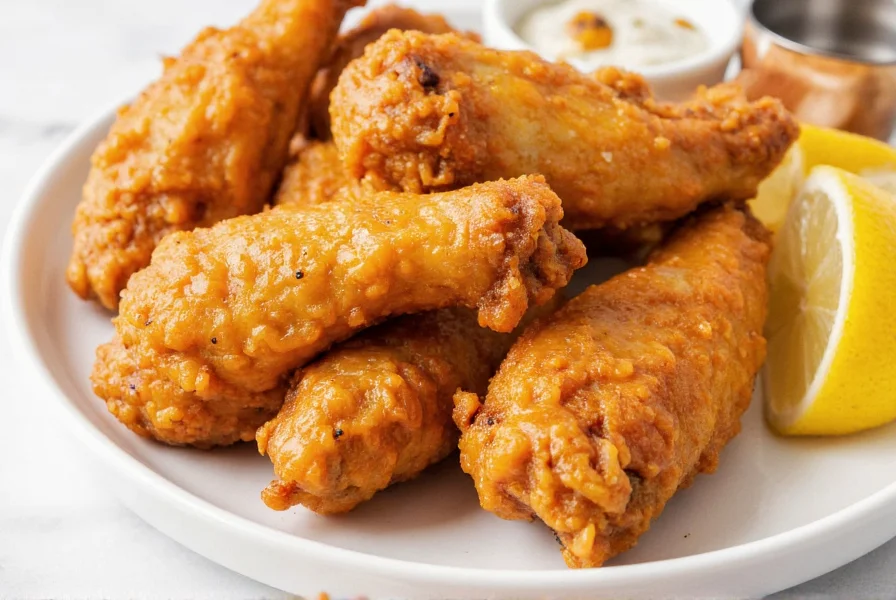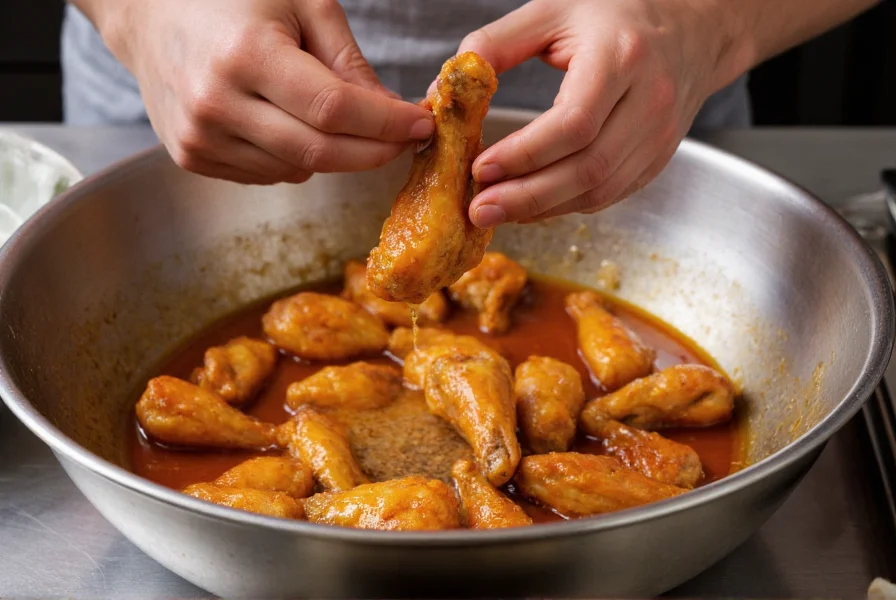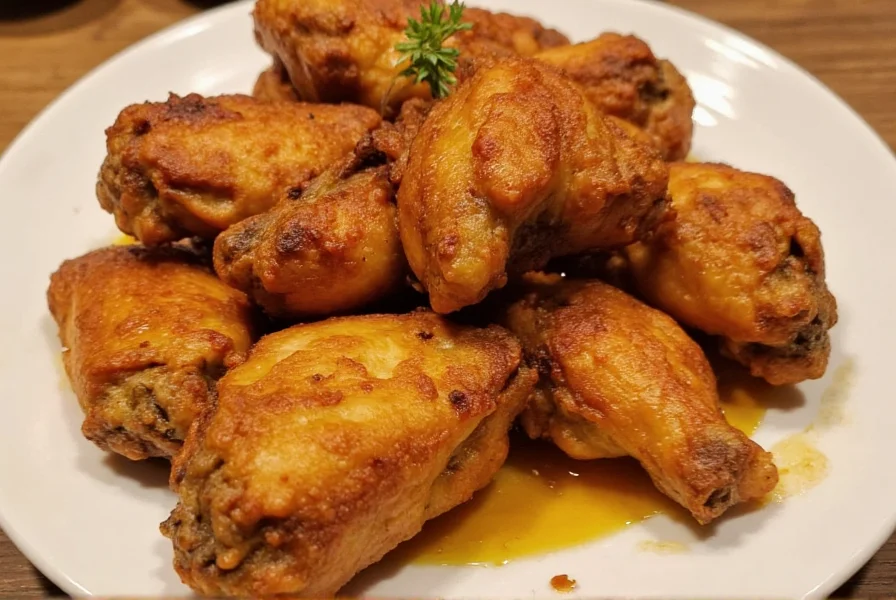When searching for lemon pepper wings wet preparation methods, home cooks often seek that perfect balance between zesty citrus and bold pepper flavors with the right saucy consistency. The "wet" designation specifically refers to wings coated in a liquid-based sauce rather than a dry spice rub, resulting in a glossy finish and more intense flavor profile that penetrates the meat.
What Makes Lemon Pepper Wings Truly "Wet"
The key distinction between wet and dry lemon pepper wings lies in the preparation method. Wet-style wings incorporate a sauce made from fresh lemon juice, zest, melted butter or olive oil, and cracked black pepper. This liquid base creates a cohesive coating that adheres to the wings during cooking, unlike dry rubs which sit primarily on the surface.
Professional chefs prefer the wet method for lemon pepper wings because the liquid components help distribute flavors evenly and create that desirable restaurant-style sheen. The moisture in the sauce also prevents the seasoning from burning during high-heat cooking, preserving the bright citrus notes that define authentic lemon pepper chicken wings wet style.

Essential Ingredients for Perfect Wet Lemon Pepper Sauce
Creating authentic wet lemon pepper wings requires attention to ingredient quality and proportions. The sauce should balance acidity, heat, and richness without overwhelming the chicken.
| Ingredient | Function | Professional Tip |
|---|---|---|
| Fresh lemon juice (not bottled) | Provides bright acidity | Use 3-4 lemons per pound of wings for optimal flavor |
| Lemon zest | Intensifies citrus aroma | Add after cooking to preserve volatile oils |
| Freshly cracked black pepper | Creates complex heat profile | Mix coarse and fine grind for layered texture |
| Unsalted butter or olive oil | Carries flavors and creates glossy finish | Butter adds richness; olive oil keeps it lighter |
| Garlic (optional) | Enhances depth | Use roasted garlic for subtle sweetness |
Step-by-Step Wet Lemon Pepper Wings Preparation
Follow these professional techniques to achieve perfectly sauced wings every time:
1. Proper Wing Preparation
Start with dry wings—pat them thoroughly with paper towels before cooking. Moisture prevents proper crisping, which is essential for wet lemon pepper wings that aren't soggy. For best results, separate wings into flats and drumettes, then toss with 1 tablespoon cornstarch per pound to enhance crispness.
2. Cooking Method Matters
Bake wings at 400°F (200°C) for 45-50 minutes or until golden brown and crispy. Alternatively, air-fry at 380°F (190°C) for 22-25 minutes, flipping halfway. The key is achieving maximum crispness before saucing—this prevents lemon pepper wings turning out wet and soggy.
3. Sauce Application Technique
Prepare your lemon pepper sauce by combining 1/4 cup lemon juice, 2 tablespoons melted butter, 2 tablespoons freshly cracked pepper, and 1 teaspoon lemon zest. Toss the hot, crispy wings in the sauce immediately after cooking. The residual heat helps the sauce adhere without making wings soggy. For restaurant-style wet lemon pepper wings with perfect consistency, use a 3:1 wing-to-sauce ratio.

Common Mistakes That Ruin Wet Lemon Pepper Wings
Avoid these pitfalls when preparing your lemon pepper wings wet recipe:
- Adding sauce too early—always toss wings in sauce after they've reached full crispness
- Using bottled lemon juice—freshly squeezed provides brighter flavor without preservatives
- Overcooking the sauce—heat gently to preserve citrus notes; never boil
- Incorrect pepper ratio—use freshly cracked pepper, not pre-ground, for optimal flavor
Serving and Storage Tips for Wet Lemon Pepper Wings
Serve wet lemon pepper wings immediately after saucing for best texture. Pair with cooling sides like ranch dressing, celery sticks, or cucumber salad to balance the citrus-pepper intensity. For meal prep, store unsauced wings and sauce separately—combine just before serving to maintain crispness.
If you must store sauced wings, refrigerate for up to 24 hours. Reheat in an air fryer at 350°F (175°C) for 5-7 minutes to restore crispness. Avoid microwaving, which creates soggy wet lemon pepper wings with compromised texture.
FAQ: Wet Lemon Pepper Wings
What's the difference between wet and dry lemon pepper wings?
Wet lemon pepper wings use a liquid-based sauce made with lemon juice, zest, and butter or oil that creates a glossy coating. Dry versions use a spice rub without liquid components. Wet-style wings have more intense flavor penetration and a restaurant-quality finish, while dry rubs sit primarily on the surface.
Why are my lemon pepper wings soggy instead of wet-style?
Sogginess occurs when sauce is applied to wings that aren't fully crispy, or when too much liquid is used. Always achieve maximum crispness before saucing, and use the proper 3:1 wing-to-sauce ratio. Pat wings dry before cooking and avoid adding sauce while wings are still in the oven or air fryer.
Can I make wet lemon pepper wings without butter?
Yes, substitute butter with olive oil or avocado oil for a dairy-free version. The oil helps carry flavors and create the characteristic glossy finish. For best results with oil-based sauces, increase lemon zest slightly to compensate for butter's richness and use a touch of honey to help the sauce adhere to the wings.
How do I keep wet lemon pepper wings from losing crispness?
The key is proper timing—toss fully cooked, crispy wings in sauce immediately before serving. Never sauce wings while they're still cooking. For meal prep, store wings and sauce separately, combining only when ready to eat. Reheat unsauced wings to restore crispness before adding sauce.











 浙公网安备
33010002000092号
浙公网安备
33010002000092号 浙B2-20120091-4
浙B2-20120091-4